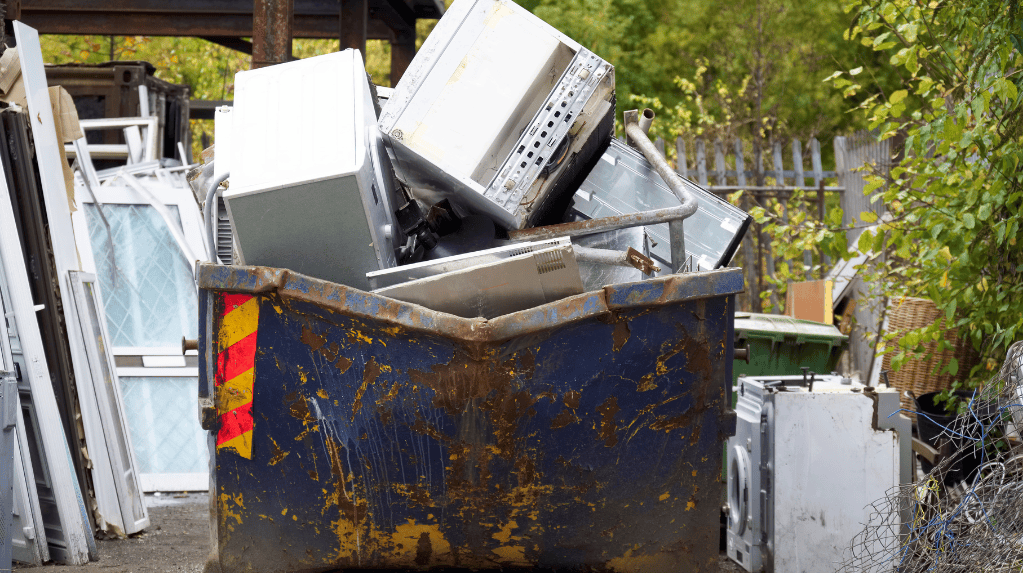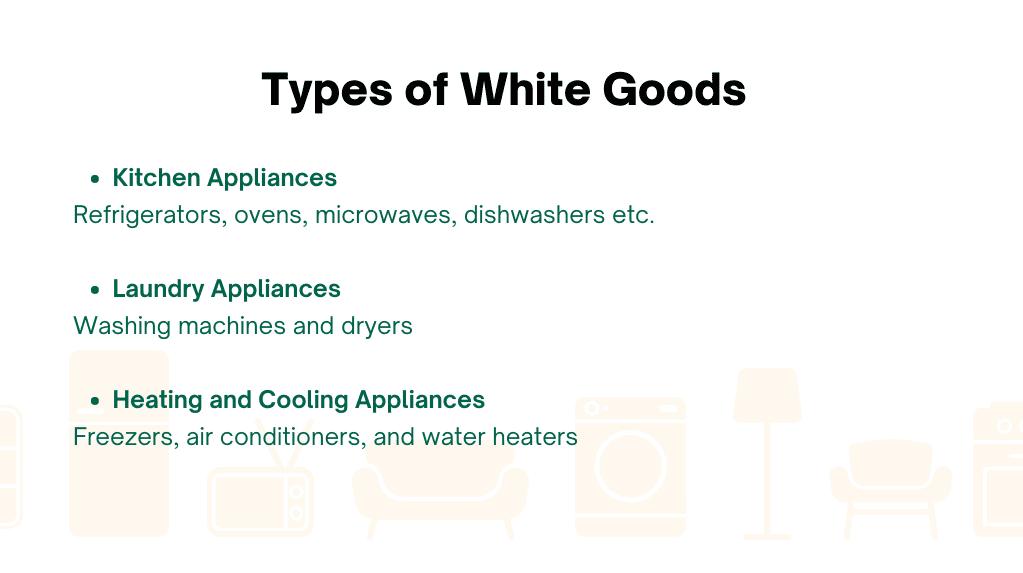
You may have heard of the term “white goods” and wondered what exactly they are. Well, they aren’t as elusive as they sound — in fact, you already have some white goods sitting in your home right now! In this article, we’ll give you the full rundown of what white goods are, how to identify them, whether they can be recycled, and finally, what to do when you need to dispose of them.
What are White Goods?
White goods refer to a category of household appliances that are typically large and usually white in colour, hence the name. These appliances bring convenience into our homes and have become an essential part of modern living. Some examples of white goods include refrigerators, washing machines, ovens, dishwashers, and freezers.
The term "white goods" was first introduced in the 1940s to refer to large household appliances that were traditionally white, such as refrigerators and washing machines. This was because white was considered to be a neutral colour that would go with any décor. Additionally, white was a practical colour for appliances, making them easy to keep clean.
Types of White Goods
- Kitchen Appliances: This category includes refrigerators, ovens, microwaves, dishwashers, or other appliances that help with cooking, food storage, and cleaning.
- Laundry Appliances: Washing machines and dryers fall under this category. They automate the laundry process, saving time and effort for busy households.
- Heating and Cooling Appliances: Freezers, air conditioners, and water heaters that are used to control temperatures, whether to keep food fresh for longer or to make the home environment more comfortable.

Environmental Impact of White Goods Disposal
As time goes on, these appliances eventually reach the end of their functional lives. Broken or outdated appliances will need to be disposed of to free up space for their newer replacements.
However, the disposal of white goods poses significant environmental challenges. The large and bulky size of these appliances takes up valuable space in landfills, and their constituent materials can often release harmful substances into the soil and air. Older models of appliances also tend to contain chemicals that can deplete the ozone layer and contribute to global warming, as well as heavy metals like mercury or lead that can leach into the environment, posing health risks.
Moreover, the significant energy and resources used in manufacturing these appliances are lost when they are simply dumped in a landfill. The responsible disposal of white goods is essential to prevent pollution, conserve resources, and reduce the carbon footprint associated with their production and disposal.
Are White Goods Recyclable?
Thankfully, white goods are recyclable — and to a substantial extent too. White goods contain a variety of valuable materials, such as metals (steel, aluminium), plastics, and glass, which can be recovered and reused in the manufacturing of new products. However, recycling white goods is a complex process that requires careful dismantling, material separation, and specialised recycling techniques.
While not all components may be directly recyclable, advancements in recycling technology are continuously improving the efficiency of resource recovery. Recycling white goods plays a pivotal role in conserving natural resources, reducing waste, and reducing the environmental impact of their disposal.

Challenges of Recycling White Goods
Since white goods can be recycled, why is it that not many of them end up being recycled? Well, due to the complex composition of materials in white goods, recycling them poses several challenges.
One significant obstacle is the need for material separation. Unlike other recyclable goods like metal cans or plastic bottles, white goods can’t simply be tossed into a recycling machine — they must first undergo a thorough disassembly and sorting process to separate each of its different materials. This process is incredibly labour-intensive and time-consuming.
The presence of hazardous substances is another issue altogether. Components such as refrigerants and electronic parts can contain substances potentially harmful to the environment and humans, requiring the expertise of qualified professionals to remove them safely before recycling.
Last but not least, white goods are big and heavy, making their disposal and transport to recycling centres a challenge.
How White Goods Are Recycled
Recycling white goods is a complicated process involving multiple steps. Here’s what white goods must undergo to be recycled:
- Collection and Transport: The process begins with the collection of discarded white goods, which are then transported to specialised recycling centres equipped to handle their complex components.
- Assessment and Dismantling: Upon arrival, the appliances are given a detailed assessment. Skilled technicians then dismantle them, carefully separating different components and materials.
- Hazardous Substance Removal: The hazardous substances, such as refrigerants and electronic components, are safely removed, ensuring compliance with environmental regulations.
- Material Separation: Metals like steel, aluminium, and copper are extracted, along with plastics and glass. These segregated materials are then prepared for further processing.
- Processing and Repurposing: The extracted materials are sent to specialised recycling facilities to prepare them for reuse. Metals are smelted and refined, while plastics are reprocessed into raw materials.
These extracted materials will be reused in the manufacture of new products, completing the cycle. By recycling white goods, we conserve our planet’s precious and finite resources, reduce landfill waste, and lessen the overall environmental impact of their disposal.

How to Dispose of Your White Goods
When the time comes to part ways with your white goods, it’s always better to do it in a responsible and sustainable way. Here are some responsible disposal options for you to consider:
- Donate or Resell: If your appliances are still functional, don’t throw them away just yet! Consider donating them to charities or reselling them — someone else could use them just as you have. Doing so helps to extend their lifespan and reduces necessary waste.
- Work With Your Local Council: Most LGAs hold white goods clean-up days, with some charging a small fee for the service. Depending on the type of appliance, you may be required to do some manual disassembly prior to collection.
- Use a Removal Service: Engage a professional rubbish removal service to handle all of the disposal work for you! These services are equipped to handle white goods and will recycle or dispose of them in an environmentally friendly manner.
Final Thoughts
Now that you’re aware of what white goods are and how they can be recycled, be sure to remember the key points we’ve highlighted above the next time you have an old refrigerator or washing machine that needs to be disposed of. By recycling white goods, we can close the loop on waste and reuse valuable resources for new creations.
If you have white goods that need to be removed, why not consider Ridly’s convenient and fast rubbish removal services? We offer same-day removal to take your unwanted appliances out of sight and into a recycling centre for sustainable disposal. Give us a call today!